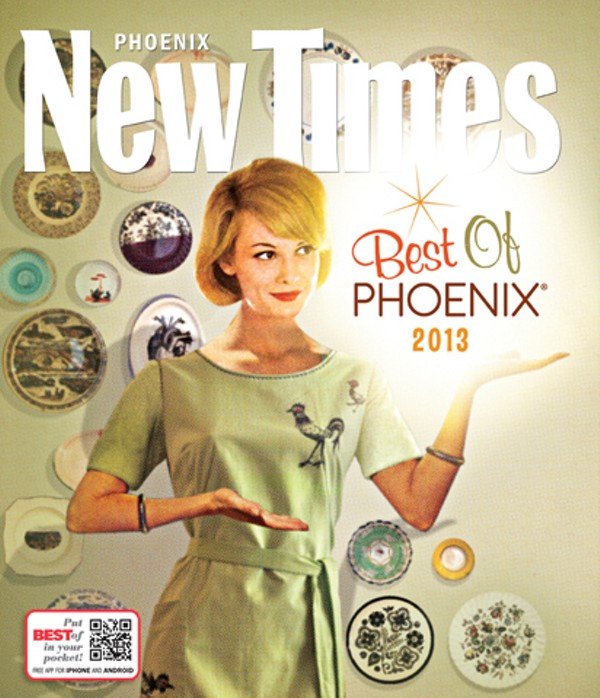Neither Sean "Senbad" Badger nor Pete "Supermix" Salaz are particular shy about their love for DJ Qbert. So after the Monarch Theatre co-owners, both of whom are considered ultra-talented DJs in their own right, got word that the renowned turntablist was eager to perform at their joint last November, Badger estimates it took "like two seconds" to book the event. After all, showcasing influential DJs and turntable superstars like Qbert is one of many reasons they opened the Monarch back in 2012. "Our first reaction was, 'Hell, yeah, we'd love to do that,'" Badger says. "We didn't go looking for the show; they came to us." It's something that happens frequently, as numerous selectors specialized in turntablism (a DJ subgenre from the 1980s where performers manipulate records, decks, and mixers to create a dizzying array of scratching and pimp sounds) have approached Badger and Salaz about potential gigs. Power 98.3's M2 has amazed crowds here with his vinyl trickery, as have fellow Valley scratch gurus Logan "Elecment" Howard, Fresh 85, and Akshen. And NYC's Roli Rho practically melted his wax in April with lightning-quick hands and phenomenal moves. So why do these scratch kings come to Monarch? Its high-end 30,000-watt sound system doesn't hurt. Plus, other club owners tend to shy away from the old-school art form in favor of more trendy DJ sounds, whereas Badger and Salaz are big on keeping the tradition alive. "It brings back that early era of DJs," Badger says, "And exposes old traditions to some younger generations as well." Word.
Best Dance Floor
Smashboxx

Subtlety has never been Smashboxx's style. (Hell, it's never been Scottsdale's style, period.) Like most other Old Town clubs, the overriding philosophy at this Indian Plaza favorite is to go all out and as over-the-top as possible. So when the proprietors decided to beef up the dance digs last October, they added more room by relocating the DJ booth, more boom with additional Dynacord subwoofers, and plenty of extra color with a few dozen more LED spotlights. Its amps up the already manic energy of Smashboxx as DJs hurl electro-house hits at the sunken dance floor mobbed with clubgoers and awash in a sea of light and pulsating sound. And if the music switches over to the "Imperial March" and a couple of sexy Darth Vaders (complete with lightsabers) come out of nowhere, it's about to get even more cray-cray. No, seriously. It usually means some high roller's popped for a $900 bottle, resulting in female staff bearing a custom-made diamond-shaped champagne presenter while dressed in either Star Wars, Ghostbusters, or Rocky costumes while the respective movie's theme music plays. The Force is strong with Smashboxx.
- 7419 E. Indian Plaza, Scottsdale, 85251 Map
- 480-294-9186
- www.smashboxxaz.com
Best Weekly Dance Night
Foul Play, Fridays at Bar Smith
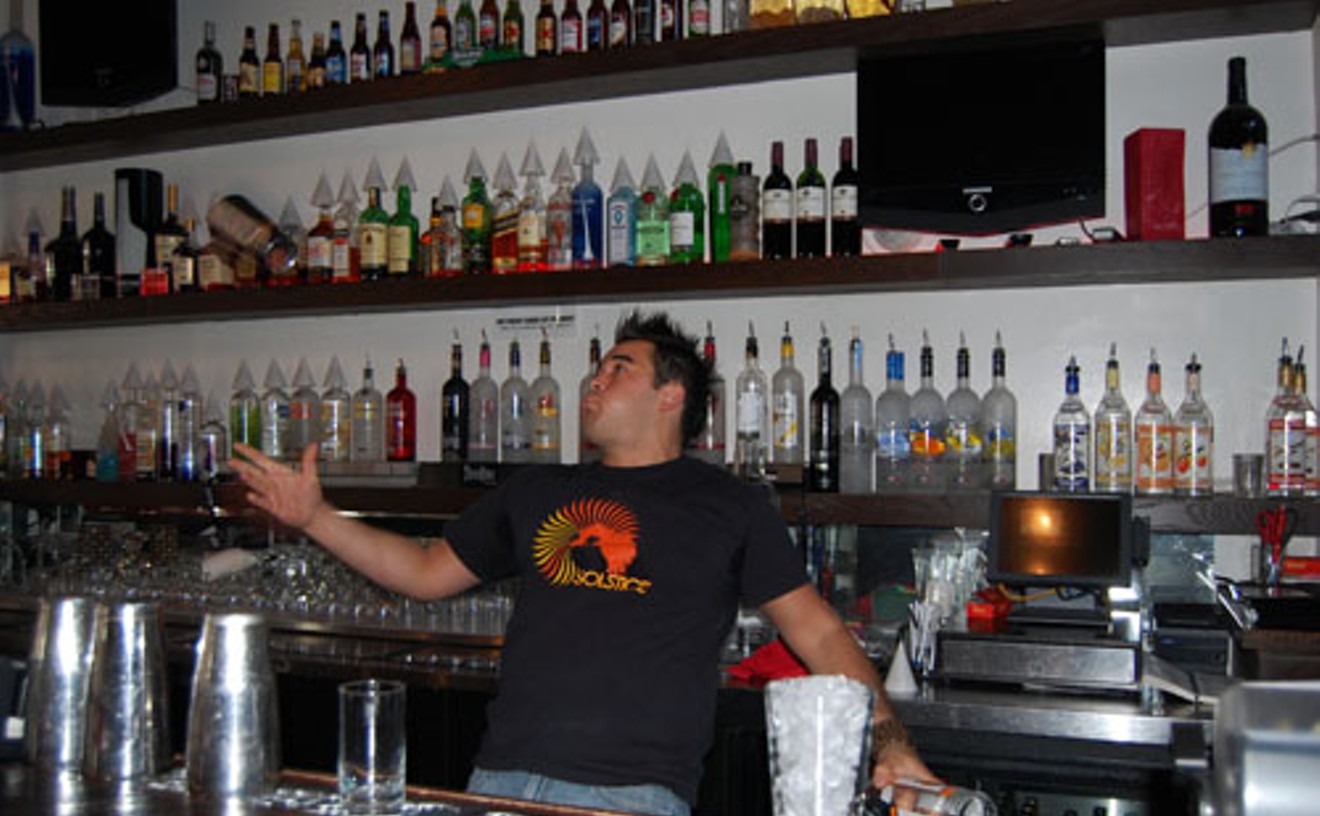
Thomy Hoefer is sort of a Renaissance man when it comes to nightlife. The DJ and visual artist has a knack for crafting ear-pleasing electro mixes, unique-looking club staging, and eye-catching video feasts, which are projected onto the walls at the events he helps promote. Oh, and he's good with cocktails, too. One of the latest things that Hoefer, who performs as Prince Money Money, has been involved with recently that's gone golden, quite literally, is Foul Play. After William Reed pulled the plug on his popular Sticky Fingers at Bar Smith, Hoefer (a former resident of the night) pulled a Nick Fury and assembled DJs from four of the Valley's biggest weeklies for a different sort of dance fete to take its place and "toy with people's expectations of a party." He brought on board The Blunt Club's Pickster One, J.Paul from UK Thursdays, and Solstice's Bigie Meanmugg to help run the night, which launched last November at Bar Smith, and things blew up shortly thereafter.
Each DJ contributes in their own way, such as Meanmugg tackling graphic design or J.Paul and Pickster helping book EDM guests like Tittsworth, Willy Joy, and Butch Clancy. And then there are the phantasmagorical video streams conjured up by Hoefer and his fellow Gestalt Theory artist Aaron Olmstead that are featured throughout Bar Smith during Foul Play. The imagery runs the gamut from old school video game graphics to dreamy maelstroms of color and accentuates the “enticing fever-dreams” of music that’s on tap every week. Typically, there’s bleeding-edge nu-disco, house, and moombahton upstairs, hip-hop and trap downstairs, and a helluva lot of fun throughout. Probably one of Foul Play's most popular draws is its photo booth concept, another Hoefer brainchild, whereby patrons can utilize such props as over-the-top fake weaponry (read: butcher knives, guns, bats) that's been spray-painted gold. Plus, there's also a boombox. Pictures are then rendered in black and white (except for the props in them) and posted to Facebook. According to J.Paul, it's just part of the vibe of Foul Play. "We wanted it to be the kind of place where you just let loose and do something that you wouldn't normally do," he says. Stay gold, y'all, stay gold.
- 130 E. Washington St., Phoenix, 85004 Map
- 602-456-1991
- www.barsmithphoenix.com
Best Place to Find a Rave
Arizona Event Center

Raves and underground dance parties have a tendency to get messy at times, particularly those with colorful themes. Just ask Arizona Event Center owner Wayne Craig, since his cavernous Mesa venue has hosted a few such events in the past year that left things gloriously sloppy by the end of the night. To wit: The annual Bloodfest last October saw participants drenching the place and each other with gallons of crimson liquid, while August's Splat! paint party involved much of the same, only with a rainbow of glossy pigments instead. And Bubble Bobble 5 in March featured flocks of ravers grinding in a shoulder-high sea of soapy foam, leading one onlooker to describe the scene as a "giant sweaty bowl of raver soup."
Thank goodness for plastic dropcloths, which promoters lay down in abundance beforehand, obviously the reason Craig doesn't seem to mind the mess so much. "They do a nice job to prep things, and we have some good folks that work for us to help out afterwards," he says. A crack cleaning crew and an agreeable proprietor aren't its only amenity, as the 30,000-square-foot former nightclub and big-box store also has three stages, a full bar for 21-and-over types, and even a mechanical bull (a holdover from a brief stint as a country bar). Its tiny smoking area often gets a little too crowded but allows rave kids the pretense to get closer to partygoers of the opposite sex and offer to clean off some of the excess paint, fake blood, or foam.
- 1300 S. Country Club Dr., Mesa, 85210 Map
- 480-779-7716
- www.arizonaeventcenter.com
Best Place to Hear EDM
Wild Knight

There's an important rule in the club world that any and every newbie DJ would be wise to follow: Never attempt to outdo the headliner. As in ever. Especially not at Wild Knight. You won't impress anybody, least of all the big-name artist you're trying to show up. And, even worse, if you pulled that shit at this Scottsdale hotspot, it probably would be a major diss to one of the biggest and brightest names in electronic dance music. High-caliber beat-slingers have been regular guests at the posh nightclub over the past couple of years, thanks to Relentless Beats and other local EDM promoters, including scores of high-rankers from the DJ Mag Top 100. Skrillex brought it hard here, as did Tommy Trash, Dada Life, Hardwell, Wolfgang Gartner, and Paul Oakenfold (twice). And their supreme four-on-the-floor audio feasts also tend to sound better here than at most other Old Town parlors, since its setup (which boasts a Nexo-powered system and various bass traps to keep teeth from being rattled by low-end wub-wub) was engineered specifically for EDM. And Wild Knights' new owners, who purchased the club earlier this year, are reportedly planning to revamp its interior later this fall to lessen the emphasis on bottle service, put more of the focus on DJs, and make things even more copacetic for electronic sounds. They've also loosened up its old ultra-selective door policies, which means that the rest of us can join in the fist pumping.
- 4405 N. Saddlebag Trail, Scottsdale, 85251 Map
- 480-213-9500
- www.wildknightclub.com
Best Reboot
Pub Rock
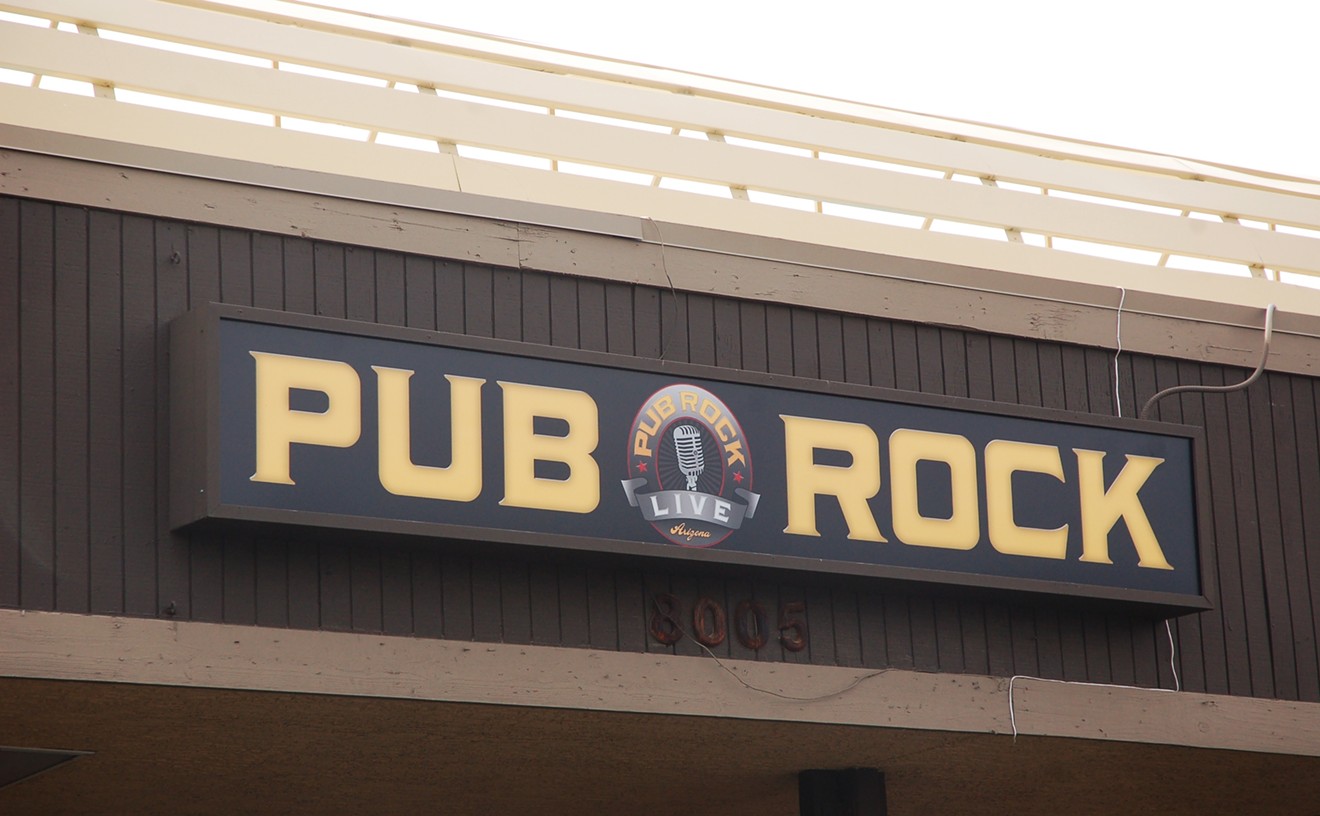
In the Valley's music scene, change is sometimes a good thing. Yes, it's always a buzzkill when a favorite band or concert hall goes kablooey. But more often than not, something better will come along. Case in point: When longstanding rock bar Chasers was purchased by KUKQ's Nancy Stevens and concert/event production guru Jeff Stotler in 2012, it got a complete makeover and new lease on life as Pub Rock. It definitely had seen major mileage over the decades during its stints as Chasers and as '90s hard-rock haven The Atomic Café, so the pair started making changes literally five minutes after getting the keys. They covered up the often-sticky and dirty cement floor with parquet tiles, rebuilt the creaky old stage, installed better sound and lighting rigs, and created a closet-size recording booth for interviews and live remotes. Its primary focal point is still on music, probably more so than ever. According to Stevens, its new moniker is a reference to the '70s era in English rock emphasizing small shows by big bands. And that's exactly what fans have seen at Pub Rock since the reboot, ranging from appearances by such punk legends as Unwritten Law and former Dead Kennedys singer Jello Biafra to an intimate acoustic concert with The Ataris' Kris Roe and a rollicking Queen tribute from The Protomen. Oh, and the bathrooms are no longer messy, fragrant scumbuckets, which makes it easier to, er, take a break between bands.
- 8005 E. Roosevelt St., Scottsdale, 85257 Map
- 480-945-4985
- www.pubrocklive.com
Best Comeback
Last Exit Live
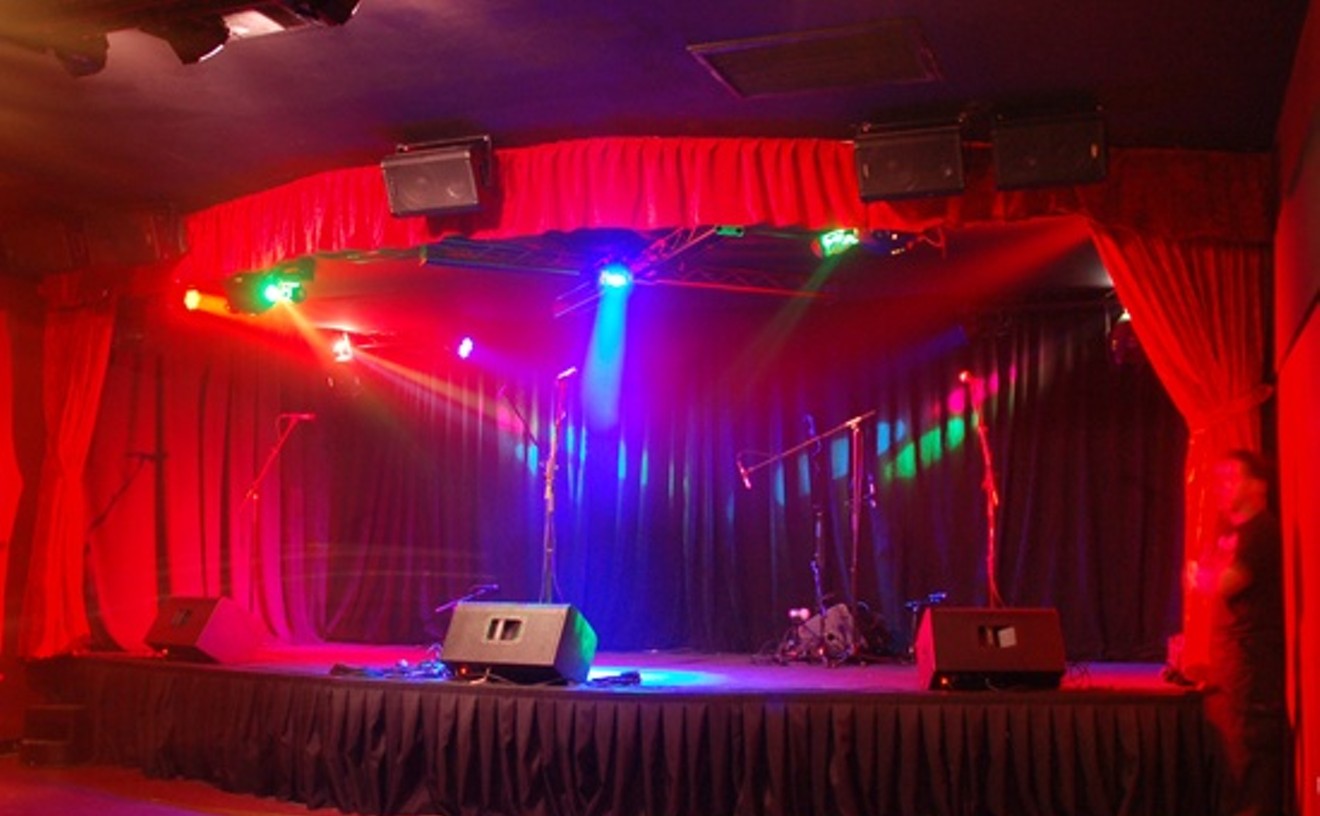
Confession time: When Brannon Kleinlein announced he was reopening his bygone venue Last Exit, we had a few doubts. Not about the man himself, since the 39-year-old is dialed into the Phoenix music scene, but rather the location he was moving into. Not only is the cozy music venue located along a confusing one-way stretch of Central Avenue, it's also in the heart of a dodgy 'hood south of downtown Phoenix. Both issues seemed to vex patrons during its previous identity as The Ruby Room and probably aided in the rock dive's untimely demise. None of this mattered to Kleinlein, however. After all, his old Tempe venue — the original version of Last Exit — also was off the beaten path, but people always seemed to find it. (In fact, it probably would still be around had he not gotten a bad case of burnout in 2009 and decided to sell the place.) Such has proved to be the case with Last Exit's reincarnation after Kleinlein fixed the joint up, improved parking and security, and began getting the word out via social media. Scenesters and music gourmandizers alike have found their way to shows, especially those involving popular and tastemaking touring and local bands. Crowds have even shown up for concerts in the middle of the workweek, which Kleinlein cites as a good sign things are going well. "Weeknight shows in this town are very tough," he says. "So if you can get 50 people out, then you're definitely doing good."
- 717 S. Central Ave., Phoenix, 85004 Map
- 602-271-7000
- www.lastexitlive.com
Best Venue for National Acts
Crescent Ballroom

Whichever way your tastes run — local or national, indie or iconic, hardcore or hip-hop — it's ultimately impossible to avoid Crescent Ballroom, which means it's a good thing there's no reason to avoid it. By day, it's a bar and lounge, soundtracked by free music and unsolicited burrito recommendations from your friends and acquaintances. At night, it's a remarkably versatile venue, hosting year-old Phoenix outfits and vets like Built to Spill with equal alacrity. For all-local showcase Los Dias de la Crescent and this year's Du Hot Club de Bizarre, which featured Of Montreal and Devendra Banhart, it even sprouts a second, outdoor stage. Ultimately, it's hard to explain what's great about watching a touring act perform at Crescent Ballroom without sounding like an anti-perspirant commercial; it's small enough for locals, but big enough to house any band that's, say, soundtracking car commercials but not yet appearing in them.
- 308 N. Second Ave., Phoenix, 85003 Map
- 602-716-2222
- www.crescentphx.com
Best Venue for Local Acts
The Sail Inn

It's like that old weather joke that people in basically every state think they invented: If you don't like the music at The Sail Inn, wait five days. Actually, one day is usually enough. A given week might see a Grateful Dead tribute show followed up with an album-release party for an early-20-something dance-pop band. And in June, the place pulled off a particularly neat trick, hosting acts named Jah Missionary and Vomit God. When so much Valley music is segregated by age, group affiliation, and sheer physical distance, that eclecticism is an asset. In other words, it's a good place to lurk if you're looking to slip out of your musical bubble. Updated and revitalized by the original owner when it reopened in 2009, The Sail Inn's calendar is still tilted toward jam and jam-affiliated rock. But Tempe residents for whom six-minute guitar solos are a non-starter still will find plenty to like.
- 26 S. Farmer Ave., Tempe, 85281 Map
- 480-966-9565
- www.thesailinn.com
Best Place to See a Metal Show
Joe's Grotto
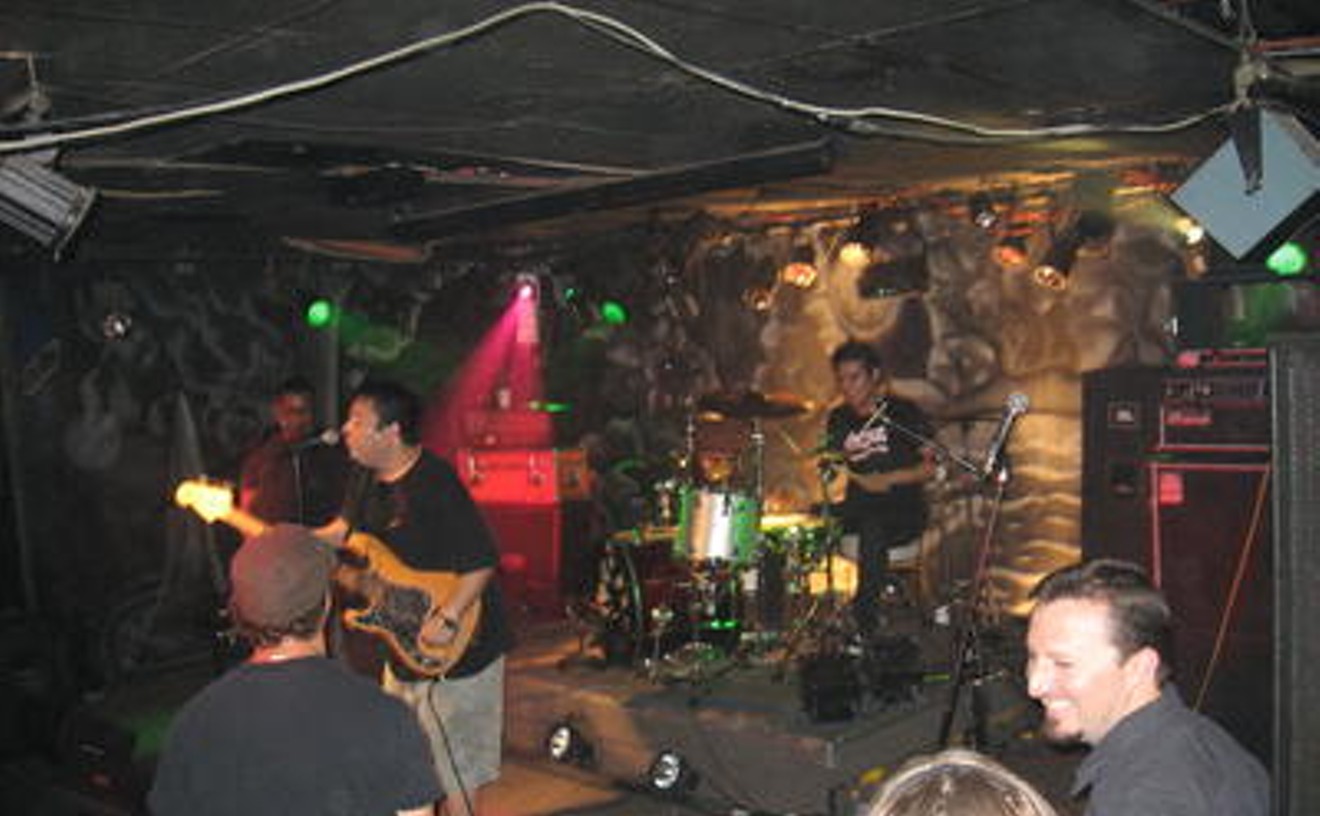
Hosting a metal show is a stressful prospect, even if it doesn't come with all the Satanic accouterments parents worried about in the '80s. For one thing, nothing else in rock 'n' roll makes noises quite comparable to metal's guttaral screaming and layered, loud guitars; for another, no other genre has thrown off quite so many warring, not-quite-compatible subgenres. Without the necessary experience, it's a constant battle to keep the bands audible and the diehard fans convinced you know what you're doing. Joe's Grotto has been around long enough to thread that needle, putting on doomcore and neoclassical shows with equal aplomb. It looks like a gritty, authentic venue, but it doesn't sound like a gritty, authentic venue, because it's got a great sound system. Lots of places periodically play host to Phoenix's metal-hungry music fans, but nobody does it more consistently and thoughtfully.
- 13825 N. 32nd St., Phoenix, 85032 Map
- 602-992-1007
- www.joesgrotto.com


